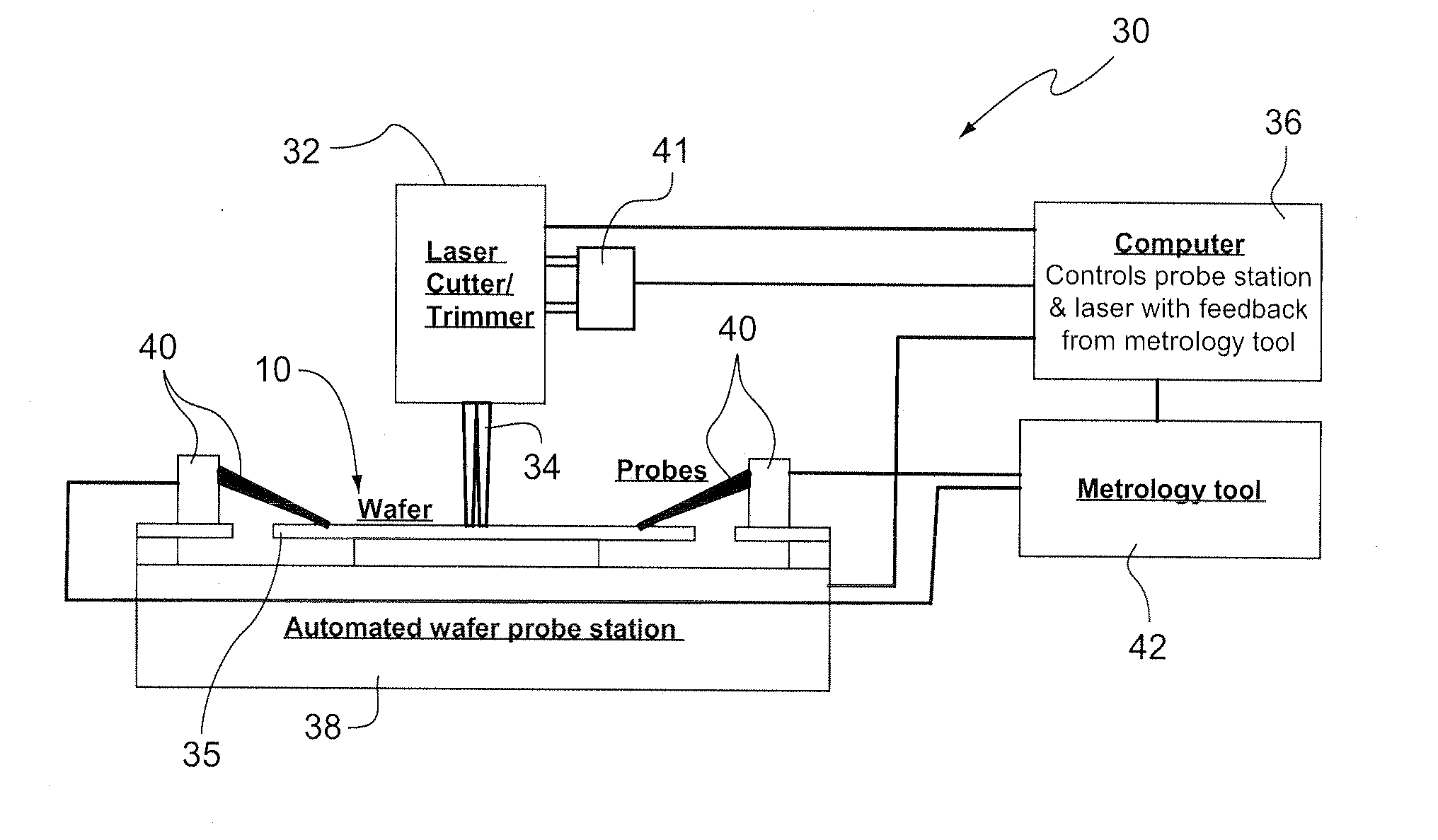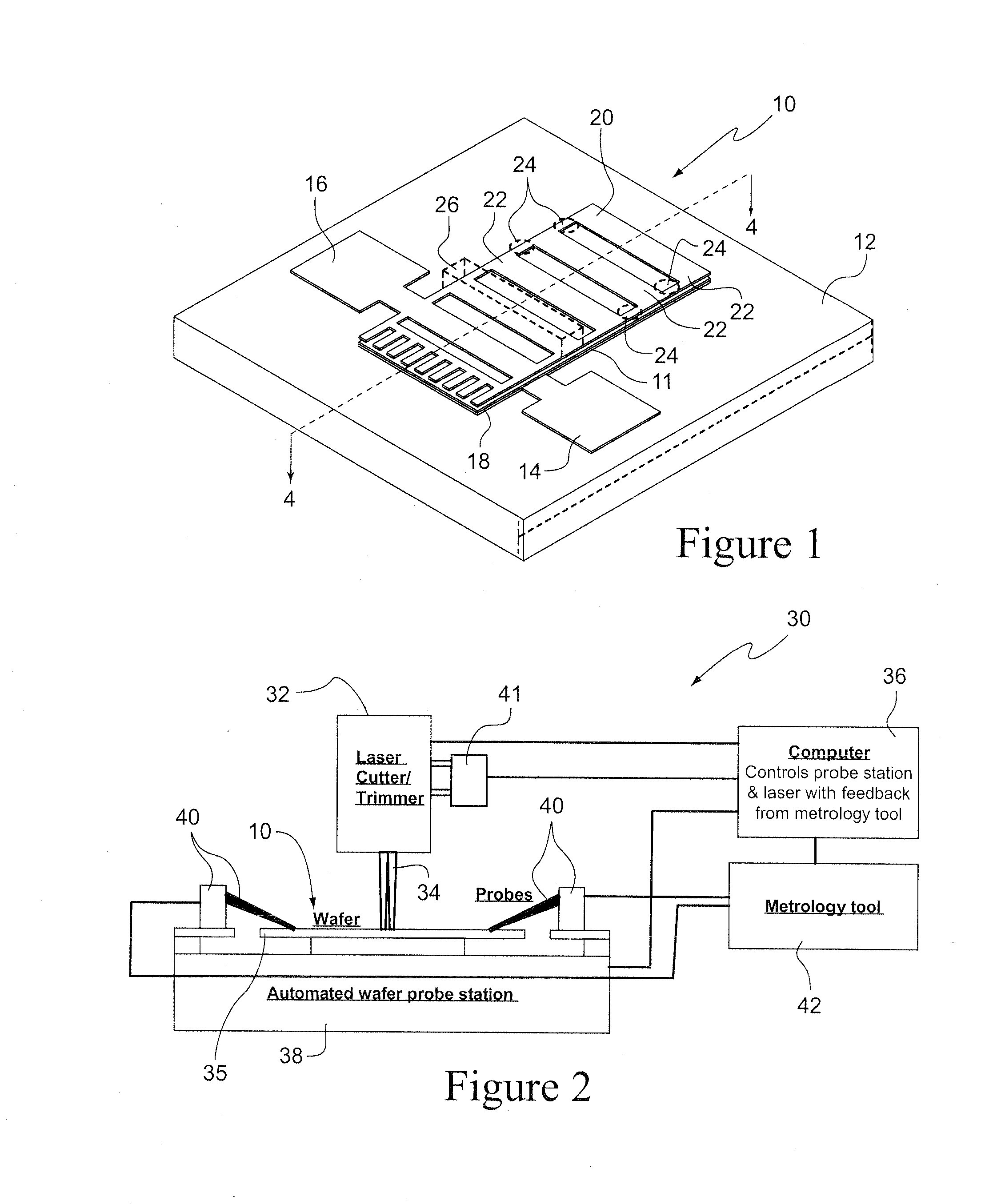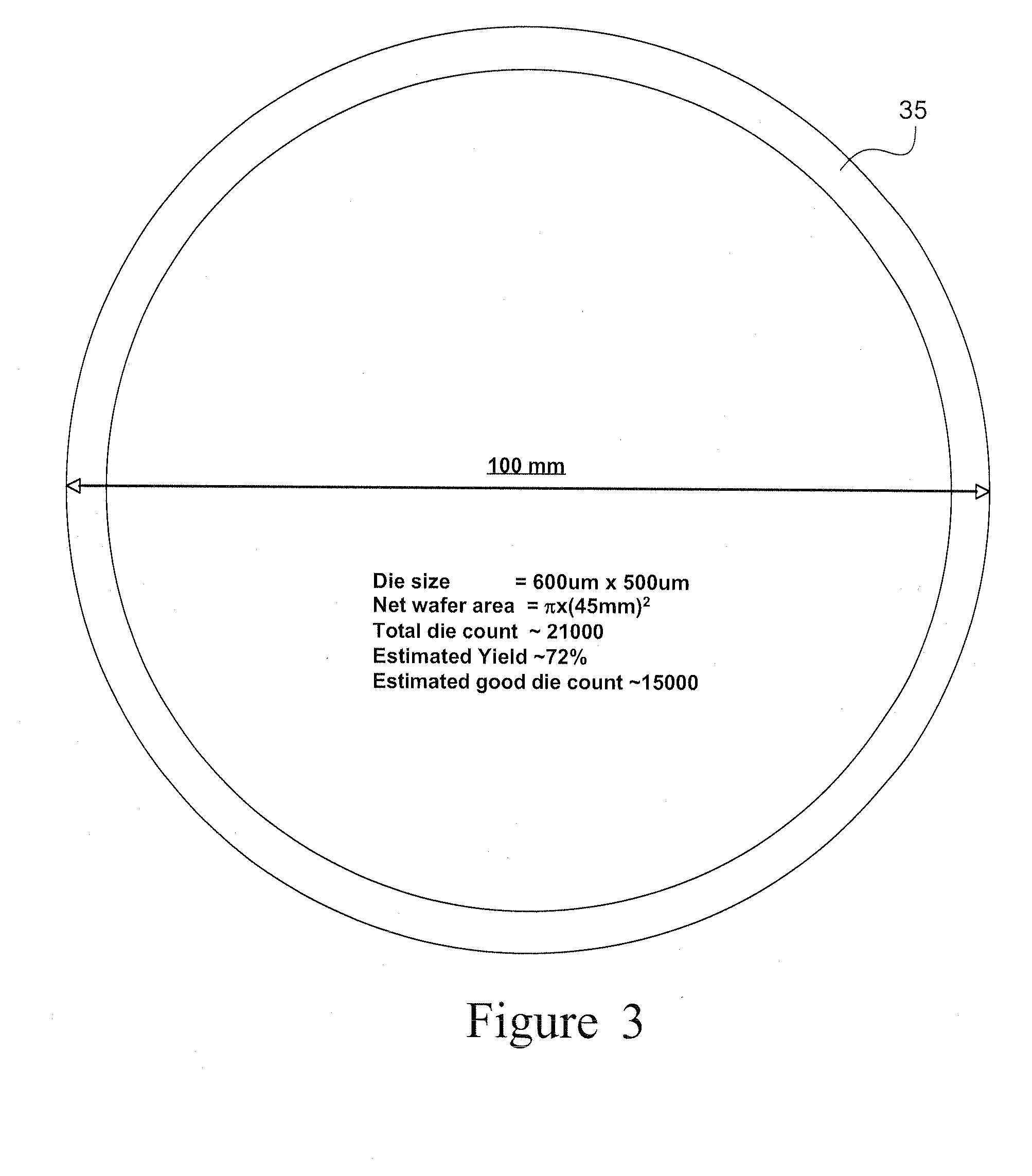Variable capacitor tuned using laser micromachining
a technology of variable capacitors and laser micromachining, which is applied in the direction of mechanically variable capacitors, variable capacitors, manufacturing tools, etc., can solve the problems of low cost, low per-component cost, and low capacitance value of prior variable capacitors, so as to achieve low cost and reduce the cost of processing a batch of substrates. the effect of relatively high cost and low cos
- Summary
- Abstract
- Description
- Claims
- Application Information
AI Technical Summary
Benefits of technology
Problems solved by technology
Method used
Image
Examples
Embodiment Construction
[0049]The present invention is directed to a variable capacitor, either in discrete or integrated form, which is used in electronic circuits. A top perspective view of one embodiment of a discrete variable capacitor 10 of the present invention is shown in FIG. 1. This device is essentially a microfabricated capacitor made using thin film deposition and photolithographic processes that has a shape to facilitate a laser micromachining tool to subsequently trim the device to the desired capacitance value.
[0050]The process sequence for making the capacitor shown in FIGS. 4(a) to (e) is inherently simple, low cost, extremely accurate, and can be done in batch fabrication (i.e., many devices made on each substrate wafer, such as the wafer shown in FIG. 3) similar to integrated circuits. As shown in FIG. 1, capacitor 10 is fabricated on a substrate 12, which is cut from a larger substrate wafer, like wafer 35 shown in FIG. 3. It should be noted that wafer 35 is one example of a wafer that ...
PUM
| Property | Measurement | Unit |
|---|---|---|
| capacitance | aaaaa | aaaaa |
| capacitance | aaaaa | aaaaa |
| capacitance | aaaaa | aaaaa |
Abstract
Description
Claims
Application Information
 Login to View More
Login to View More - R&D
- Intellectual Property
- Life Sciences
- Materials
- Tech Scout
- Unparalleled Data Quality
- Higher Quality Content
- 60% Fewer Hallucinations
Browse by: Latest US Patents, China's latest patents, Technical Efficacy Thesaurus, Application Domain, Technology Topic, Popular Technical Reports.
© 2025 PatSnap. All rights reserved.Legal|Privacy policy|Modern Slavery Act Transparency Statement|Sitemap|About US| Contact US: help@patsnap.com



